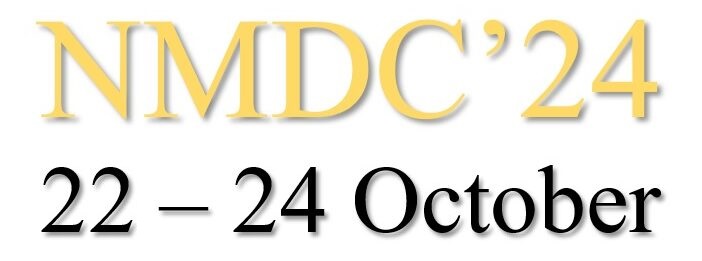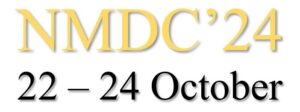Workshops & Tutorials
SS1: Workshop on NanoElectroAcoustics for Dielectric Materials Characterization
Sunday, December 12th
Time: 8:30 – 10:30 am
Program
- Needs for Nanoscale Characterization – Current Limitations with Classical Perturbation-based Methods for Probing Charges
Gilbert Teyssedre, LAPLACE, Université Paul Sabatier
- Measurement of electric charge distribution in insulators with elastic waves: A search for high spatial resolution
Stéphane Holé, Sorbonne Université
- Nanoscale ultrasonic characterization using ultrafast and near-field optical methods
James B. Spicer, Johns Hopkins University
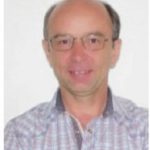 Gilbert Teyssedre was born in May 1966 in Rodez, France. He received his engineer degree in materials physics and graduated in solid state physics in 1989 at the National Institute for Applied Science (lNSA). Then he joined the Solid State Physics Lab in Toulouse and obtained his Ph.D. degree in 1993 for work on ferroelectric polymers. He entered the CNRS in 1995 and has been working since then at the Electrical Engineering Lab (now LAPLACE) in Toulouse. His research activities concern the development of luminescence techniques in insulating polymers with focus on chemical and physical structure, degradation phenomena, space charge and transport properties. He is currently Research Director at CNRS and is leading a team working on the reliability of dielectrics in electrical equipment. e-mail: gilbert.teyssedre@laplace.univ-tlse.fr.
Gilbert Teyssedre was born in May 1966 in Rodez, France. He received his engineer degree in materials physics and graduated in solid state physics in 1989 at the National Institute for Applied Science (lNSA). Then he joined the Solid State Physics Lab in Toulouse and obtained his Ph.D. degree in 1993 for work on ferroelectric polymers. He entered the CNRS in 1995 and has been working since then at the Electrical Engineering Lab (now LAPLACE) in Toulouse. His research activities concern the development of luminescence techniques in insulating polymers with focus on chemical and physical structure, degradation phenomena, space charge and transport properties. He is currently Research Director at CNRS and is leading a team working on the reliability of dielectrics in electrical equipment. e-mail: gilbert.teyssedre@laplace.univ-tlse.fr.
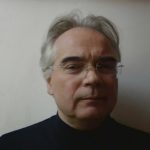 Stéphane Holé, born in 1968 (France), studied electronics and instrumentation at Université Pierre et Marie Curie-Paris6 (Paris, France). He joined Laboratoire d’Électricité Générale of École Supérieure de Physique et de Chimie Industrielles (Paris, France) to study an instrument for measuring fast development of space charges in insulators under rapid voltage variations. It was the topic of his PhD he received in 1996 and he obtained his Habilitation in 2007. Currently Professor at Sorbonne Université, he conducted his researches with Laboratoire des Instruments et Systèmes d’Ile de France from 1997 to 2007 and leads the Instrumentation Group with Laboratoire de Physique et d’Étude des Materiaux since 2007. His main research topics are space charge in insulators and semiconductors (main topic), non-destructive testing and sensors. He teaches solid state physics, electronics and sensor physics. He is coordinator of the sensors, instrumentation & measurements master at Sorbonne Université since 2009. His current address is: LPEM-SU/ESPCI/CNRS, 10 rue Vauquelin, 75005 Paris, France, e-mail: stephane.hole@espci.fr.
Stéphane Holé, born in 1968 (France), studied electronics and instrumentation at Université Pierre et Marie Curie-Paris6 (Paris, France). He joined Laboratoire d’Électricité Générale of École Supérieure de Physique et de Chimie Industrielles (Paris, France) to study an instrument for measuring fast development of space charges in insulators under rapid voltage variations. It was the topic of his PhD he received in 1996 and he obtained his Habilitation in 2007. Currently Professor at Sorbonne Université, he conducted his researches with Laboratoire des Instruments et Systèmes d’Ile de France from 1997 to 2007 and leads the Instrumentation Group with Laboratoire de Physique et d’Étude des Materiaux since 2007. His main research topics are space charge in insulators and semiconductors (main topic), non-destructive testing and sensors. He teaches solid state physics, electronics and sensor physics. He is coordinator of the sensors, instrumentation & measurements master at Sorbonne Université since 2009. His current address is: LPEM-SU/ESPCI/CNRS, 10 rue Vauquelin, 75005 Paris, France, e-mail: stephane.hole@espci.fr.
 James (Jim) Spicer is a professor of Materials Science and Engineering at The Johns Hopkins University in Baltimore, Maryland. He is the chair of Materials Science and Engineering Program in the Engineering for Professionals Program and is a member of the Principal Professional Staff at The Johns Hopkins Applied Physics Laboratory. His research focuses on laser-material interactions for advanced processing and materials characterization including ultrafast studies of nanoscale thermal and acoustic transport, polymer matrix nanocomposite processing and characterization, optical and ultrasonic characterization of additively manufactured materials, development of opto-thermal barrier coatings for space probes and characterization of high-energy laser materials. He is a member of the IEEE Nanotechnology Council, the IEEE Ultrasonics, Ferroelectrics and Frequency Control Society and the IEEE Sensors Council. He teaches graduate courses on electronic, optical and magnetic properties of materials as well as undergraduate courses on materials sustainability. e-mail: spicer@ieee.org.
James (Jim) Spicer is a professor of Materials Science and Engineering at The Johns Hopkins University in Baltimore, Maryland. He is the chair of Materials Science and Engineering Program in the Engineering for Professionals Program and is a member of the Principal Professional Staff at The Johns Hopkins Applied Physics Laboratory. His research focuses on laser-material interactions for advanced processing and materials characterization including ultrafast studies of nanoscale thermal and acoustic transport, polymer matrix nanocomposite processing and characterization, optical and ultrasonic characterization of additively manufactured materials, development of opto-thermal barrier coatings for space probes and characterization of high-energy laser materials. He is a member of the IEEE Nanotechnology Council, the IEEE Ultrasonics, Ferroelectrics and Frequency Control Society and the IEEE Sensors Council. He teaches graduate courses on electronic, optical and magnetic properties of materials as well as undergraduate courses on materials sustainability. e-mail: spicer@ieee.org.
SS3: Using nanoHUB.org in Research and Education – a Hands-on Tutorial
Sunday, December 12th
Time: 14:00 – 16:30 pm
Program Description
If you had access to interactive modeling and simulation tools that run in any browser, could you introduce interactive learning into your classes? If you had easy access tools, which need no installation, could you use them to help guide your experiments? If you did not have to worry about compute cycles, would you benchmark your own tools against other state-of-the-art approaches? If you had your own tools and could easily share them with the community, would you do it? This tutorial will provide an overview of these processes and their impact as they are supported on nanoHUB.org today.
Presenters
 Gerhard Klimeck is an Electrical and Computer Engineering faculty at Purdue University and leads two research centers in Purdue’s Discovery Park. He helped to create nanoHUB.org which now serves over 2.0 million users globally. Previously he worked with Texas Instruments and NASA/JPL/Caltech. His research interest is in computational nanoelectronics, high performance computing, and data analytics. NEMO, the nanoelectronic modeling software built in his research group established the state-of-the-art in atomistic quantum transport modeling. NEMO is now being used at Intel for advanced transistor designs and commercialized. He published over 525 printed scientific articles that resulted in over 20,000 citations and an h-index of 69 in Google scholar. He is a fellow of the Institute of Physics (IOP), a fellow of the American Physical Society (APS), a Fellow of IEEE, a Fellow of AAAS and a Fellow of the Alexander von Humboldt Stiftung (Germany). Together with physicist Michelle Simmons of the University of New South Wales, he “devised a way to make a single-atom transistor”, which ranked #29 top invention of 2013 by Discover Magazine. In 2020 the nanoHUB team was awarded a R&D 100 award for “nanoHUB: Democratizing Learning and Research”. In Oct. 2020 he was elected Fellow of American Association for the Advancement of Science (AAAS), “For the quantum mechanical modeling theory and simulation tools to design today’s nanotransistors and for leadership of the global nanotechnology community as Director of nanoHUB.”
Gerhard Klimeck is an Electrical and Computer Engineering faculty at Purdue University and leads two research centers in Purdue’s Discovery Park. He helped to create nanoHUB.org which now serves over 2.0 million users globally. Previously he worked with Texas Instruments and NASA/JPL/Caltech. His research interest is in computational nanoelectronics, high performance computing, and data analytics. NEMO, the nanoelectronic modeling software built in his research group established the state-of-the-art in atomistic quantum transport modeling. NEMO is now being used at Intel for advanced transistor designs and commercialized. He published over 525 printed scientific articles that resulted in over 20,000 citations and an h-index of 69 in Google scholar. He is a fellow of the Institute of Physics (IOP), a fellow of the American Physical Society (APS), a Fellow of IEEE, a Fellow of AAAS and a Fellow of the Alexander von Humboldt Stiftung (Germany). Together with physicist Michelle Simmons of the University of New South Wales, he “devised a way to make a single-atom transistor”, which ranked #29 top invention of 2013 by Discover Magazine. In 2020 the nanoHUB team was awarded a R&D 100 award for “nanoHUB: Democratizing Learning and Research”. In Oct. 2020 he was elected Fellow of American Association for the Advancement of Science (AAAS), “For the quantum mechanical modeling theory and simulation tools to design today’s nanotransistors and for leadership of the global nanotechnology community as Director of nanoHUB.”
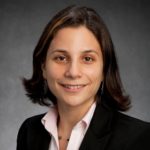 Elif Ertekin is Associate Professor, Andersen Faculty Scholar, and current Director of the Mechanics program in the Department of Mechanical Science and Engineering at the University of Illinois at Urbana-Champaign. She is currently the Director of the Network for Computational Nanotechnology Nanomanufacturing Node, which focuses on the development of advanced cyberinfrastructure tools for research, education, and industrial deployment of integrated, nanoscale manufacturing processes across areas including directed assembly, self-assembly, synthesis, nanolithography, printing and coating, deposition, etching and other emerging nanoscale processes. She has received the NSF CAREER Award, the TMS Early Career Faculty Fellow Award, the University of Illinois Rose Award for Teaching Excellence, and Emerging Leader Award from the Society of Women Engineers.
Elif Ertekin is Associate Professor, Andersen Faculty Scholar, and current Director of the Mechanics program in the Department of Mechanical Science and Engineering at the University of Illinois at Urbana-Champaign. She is currently the Director of the Network for Computational Nanotechnology Nanomanufacturing Node, which focuses on the development of advanced cyberinfrastructure tools for research, education, and industrial deployment of integrated, nanoscale manufacturing processes across areas including directed assembly, self-assembly, synthesis, nanolithography, printing and coating, deposition, etching and other emerging nanoscale processes. She has received the NSF CAREER Award, the TMS Early Career Faculty Fellow Award, the University of Illinois Rose Award for Teaching Excellence, and Emerging Leader Award from the Society of Women Engineers.
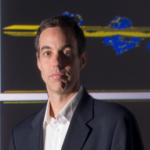 Alejandro Strachan is a Professor of Materials Engineering at Purdue University, Director, DoD ONR MURI “Predictive Chemistry and Physics at Extreme Conditions”, PCP@Xtreme, and the Deputy Director of NSF’s nanoHUB. Before joining Purdue, he was a Staff Member in the Theoretical Division of Los Alamos National Laboratory and worked as a Postdoctoral Scholar and Scientist at Caltech. He received a Ph.D. in Physics from the University of Buenos Aires, Argentina. Prof. Strachan’s research focuses on the development of predictive atomistic and multiscale models to describe materials from first principles and their combination with data science to address problems of technological or scientific importance. Areas of interest include: high-energy density and active materials, metallic alloys for high-temperature applications, materials and devices for nanoelectronics and energy, as well as polymers and their composites. In addition, Strachan’s scholarly work includes cyberinfrastructure to maximize the impact of and democratize access to models and data for research and education. Prof. Strachan has published over 180 peer-reviewed scientific papers and his contributions to research and education have been recognized by several awards, including the Early Career Faculty Fellow Award from TMS in 2009, his induction as a Purdue University’s Faculty Scholar (2012-2017), and the R&D 100 award in the area of software and services for nanoHUB.
Alejandro Strachan is a Professor of Materials Engineering at Purdue University, Director, DoD ONR MURI “Predictive Chemistry and Physics at Extreme Conditions”, PCP@Xtreme, and the Deputy Director of NSF’s nanoHUB. Before joining Purdue, he was a Staff Member in the Theoretical Division of Los Alamos National Laboratory and worked as a Postdoctoral Scholar and Scientist at Caltech. He received a Ph.D. in Physics from the University of Buenos Aires, Argentina. Prof. Strachan’s research focuses on the development of predictive atomistic and multiscale models to describe materials from first principles and their combination with data science to address problems of technological or scientific importance. Areas of interest include: high-energy density and active materials, metallic alloys for high-temperature applications, materials and devices for nanoelectronics and energy, as well as polymers and their composites. In addition, Strachan’s scholarly work includes cyberinfrastructure to maximize the impact of and democratize access to models and data for research and education. Prof. Strachan has published over 180 peer-reviewed scientific papers and his contributions to research and education have been recognized by several awards, including the Early Career Faculty Fellow Award from TMS in 2009, his induction as a Purdue University’s Faculty Scholar (2012-2017), and the R&D 100 award in the area of software and services for nanoHUB.

